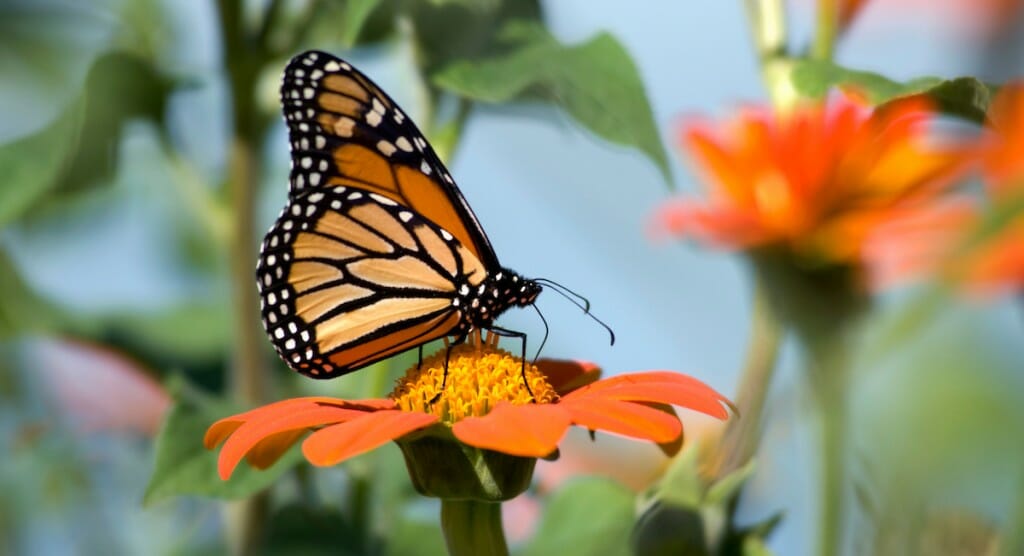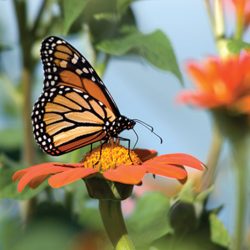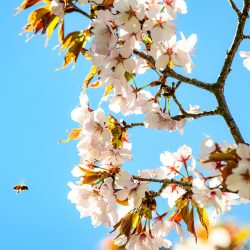When Citizens Meet Science

Journey North’s citizen scientists track the migration of monarch butterflies from Canada to Mexico.
Karen Oberhauser ’81, director of the UW Arboretum, pulls up an animated map of North America on her office computer. A trail of red, yellow, and orange dots shows the recent migration of monarch butterflies from Canada to Mexico. Each dot represents a monarch sighting by amateur biologists who participate in the Arboretum’s Journey North program. Known as “citizen scientists,” these volunteers contribute invaluable data for researchers who study monarch habitats.
Journey North is a 26-year-old citizen- science organization that relocated to the Arboretum this year. It works with 33,000 subscribers throughout North America who submit data, photographs, and observations about monarchs, hummingbirds, songbirds, tulips, and other natural phenomena. Oberhauser wanted to expand the Arboretum’s citizen-science programming and saw Journey North as a perfect fit, given its pioneering work with migratory species.
One advantage of having Journey North at the Arboretum is the potential for collaborations with UW scientists. For example, a researcher at the Nelson Institute for Environmental Studies is currently analyzing the organization’s data on migration patterns of the ruby-throated hummingbird.
“Our world-class UW researchers can use this data in ways that haven’t been done before,” says Oberhauser.
This fall, Journey North’s citizen scientists will check for monarch roost sites, ice forming on lakes, and other seasonal changes. Scientists will scrutinize their observations to understand the effects of climate change and to devise solutions for protecting species.
“We all have a role to play in understanding our natural world,” says Journey North coordinator Nancy Sheehan. “It’s not just scientists in lab coats. These observations from the wider community are what help us make appropriate, science-based decisions.”
Published in the Fall 2019 issue



Comments
No comments posted yet.